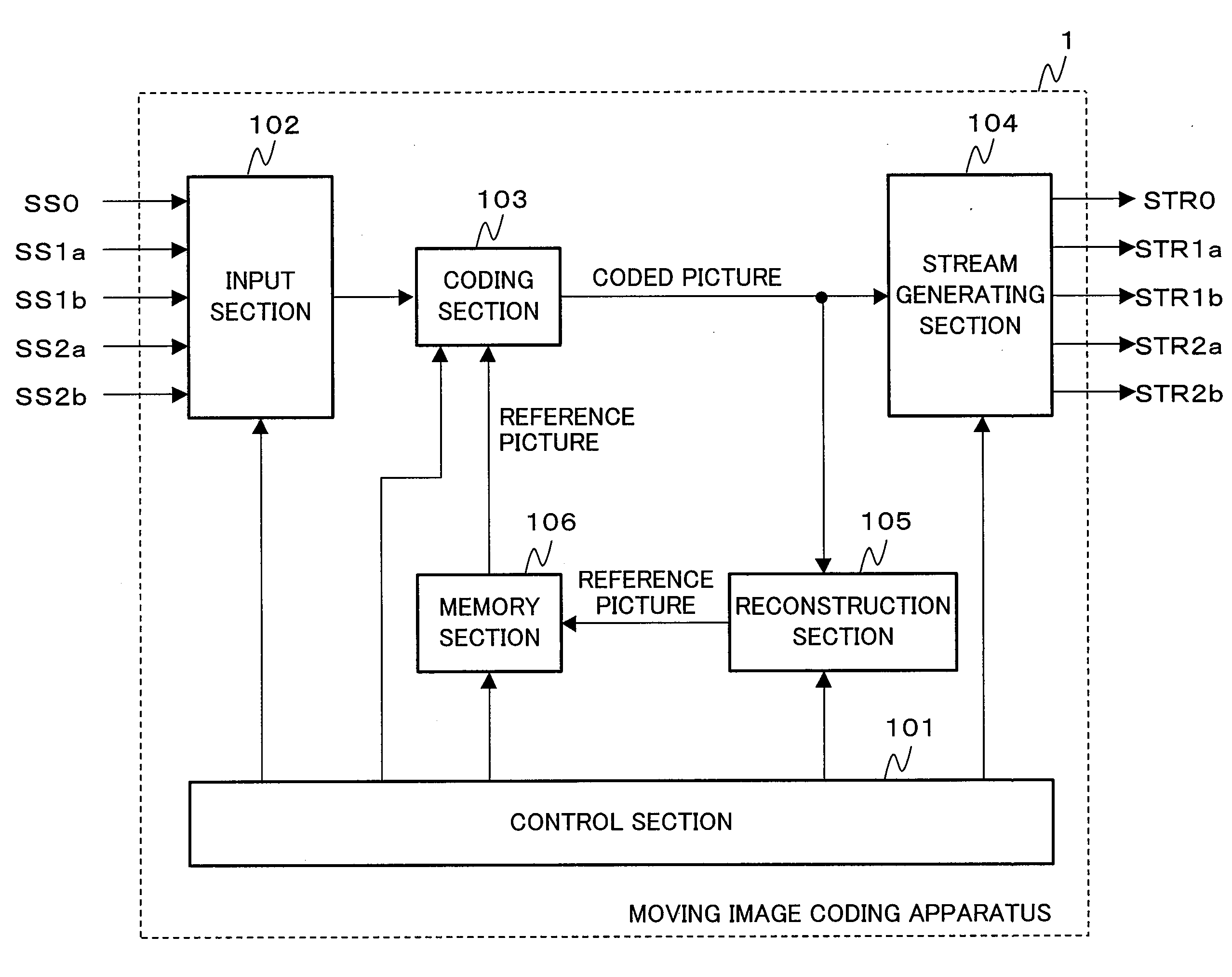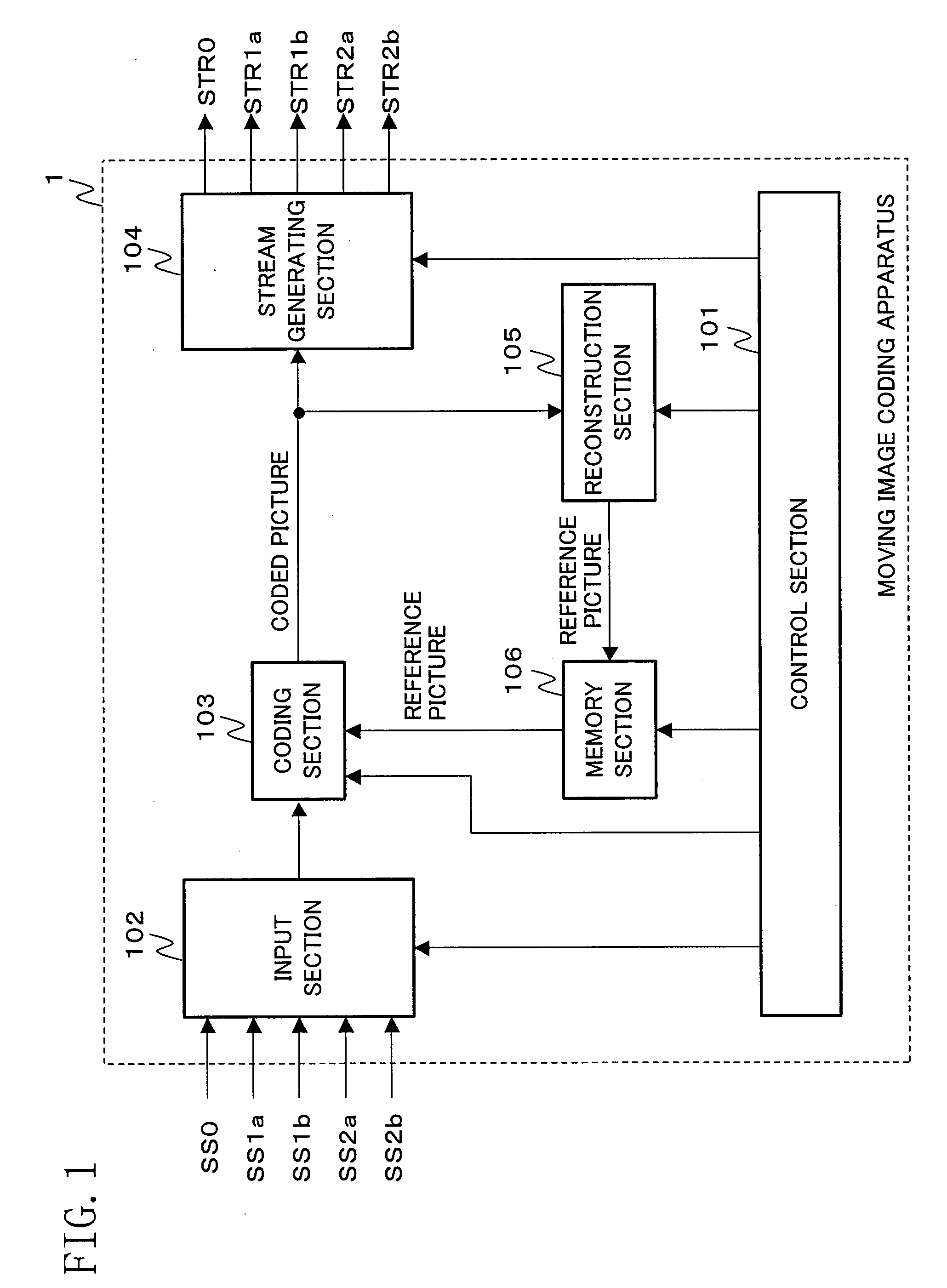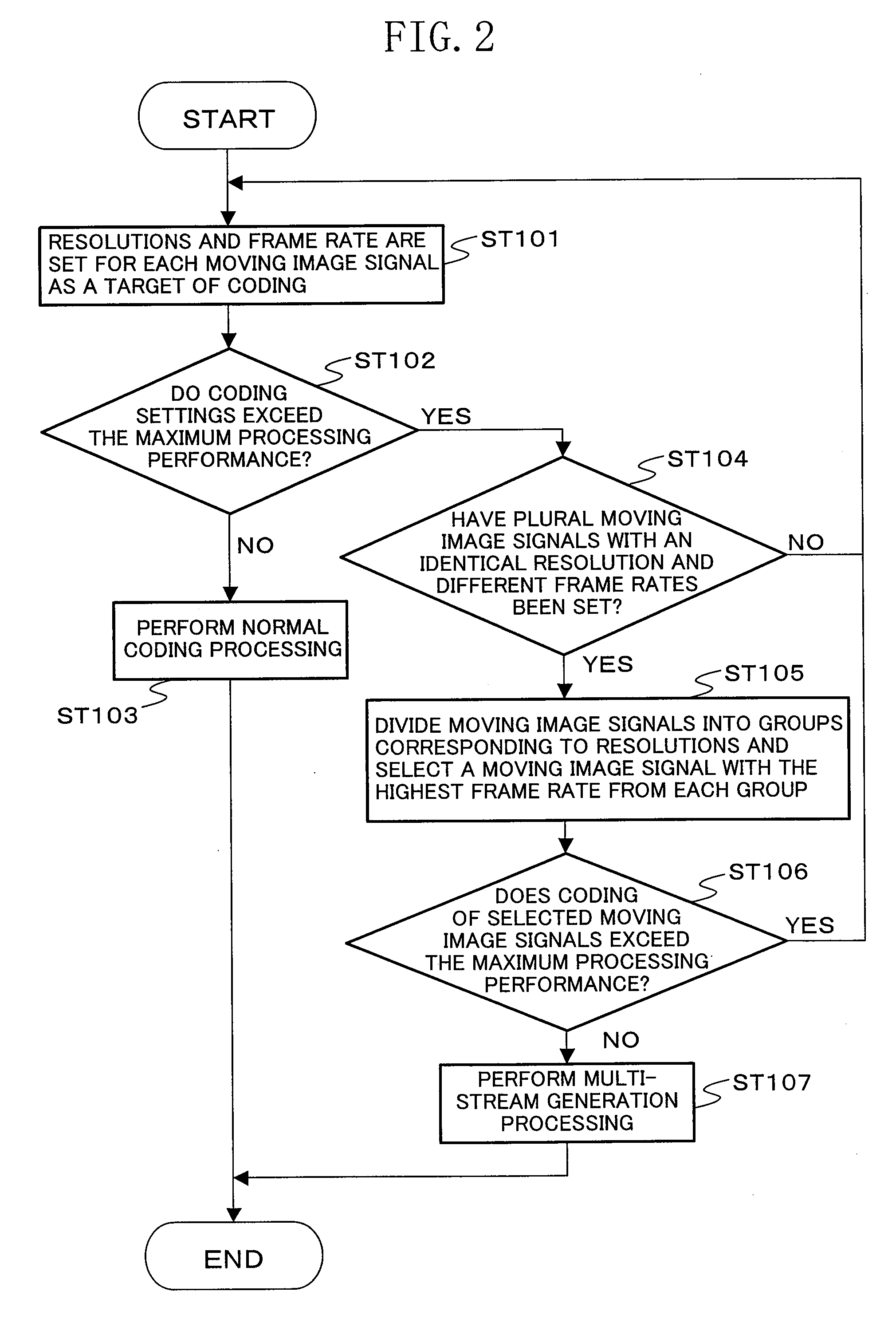Method and apparatus for coding moving image and imaging system
- Summary
- Abstract
- Description
- Claims
- Application Information
AI Technical Summary
Benefits of technology
Problems solved by technology
Method used
Image
Examples
embodiment 1
[0034]FIG. 1 illustrates a configuration of moving image coding apparatus according to a first embodiment of the present invention. In the moving image coding apparatus 1, channels are respectively allocated to a plurality of moving image signals (which are five moving image signals SS0 to SS2b in this embodiment) and the moving image signals are coded in a time-division manner on a picture-by-picture basis, thereby generating a plurality of coded streams (which are five coded streams STR0 to STR2b in this embodiment) associated with the moving image signals. The moving image coding apparatus 1 includes: a control section 101; an input section 102; a coding section 103; a stream generating section 104; a reconstruction section 105; and a memory section 106.
[0035]The control section 101 controls the input section 102, the coding section 103, the stream generating section 104, the reconstruction section 105 and the memory section 106. The control section 101 determines settings of cod...
modified example 1 of embodiment 1
[0090]During inter-coding by the coding section 103, the time difference between a picture as a target of coding and a reference picture increases, the correlation between these pictures becomes lower so that the difference between the picture as a target of coding and the reference picture is likely to increase. In particular, when a picture as a target of coding exhibits a fast motion, the correlation between the pictures greatly decreases. For example, when the picture P1(1) and the picture P2(1) in FIG. 4 are compared with each other, the coding efficiency in inter-coding of the picture P2(1) is more likely to decrease than that in inter-coding of the picture P1(1).
[0091]In view of this, as shown in FIG. 7A, the value of a quantization parameter used for coding of pictures may be adjusted based on the time difference between a picture as a target of coding and a reference picture. Specifically, the control section 101 determines whether or not the time difference between a pictu...
modified example 2 of embodiment 1
[0093]As shown in FIG. 7B, a motion search range used for inter-coding of pictures may be adjusted based on the time difference between a picture as a target of coding and a reference picture. Specifically, the control section 101 determines whether or not the time difference between a picture supplied from the input section 102 to the coding section 103 and a reference picture associated with this picture is larger than a given value (step ST120). If it is determined that the time difference is larger than the given value, the control section 101 extends a motion search range set in the coding section 103 (step ST122). For example, if the motion search range before the adjustment is −32 to +32 in the horizontal and vertical directions, the motion search range is extended to −64 to +64 in the horizontal and vertical directions.
[0094]With this control, a position exhibiting a high correlation between pictures is more easily detected from pictures as a target of coding, thus suppressi...
PUM
 Login to View More
Login to View More Abstract
Description
Claims
Application Information
 Login to View More
Login to View More - R&D
- Intellectual Property
- Life Sciences
- Materials
- Tech Scout
- Unparalleled Data Quality
- Higher Quality Content
- 60% Fewer Hallucinations
Browse by: Latest US Patents, China's latest patents, Technical Efficacy Thesaurus, Application Domain, Technology Topic, Popular Technical Reports.
© 2025 PatSnap. All rights reserved.Legal|Privacy policy|Modern Slavery Act Transparency Statement|Sitemap|About US| Contact US: help@patsnap.com



